The Natural Hygiene Movement and Homeopathy
April 09, 2008
 Increasingly, Samuel Hahnemann became
influenced by the naturopathy of Jean Jacques Rousseau
(1712-1778), whose
ideology fuelled the philosophy of naturism and the Nature Cure Movement
using herbs and tonics, which became popular throughout Europe (Stephen
Parcell, The EcoVision
Journal,__ * (N.
D. Bastyr Center for Natural Health 2002)). Samuel Hahnemann wrote many
treaties on coffee, cider vinegar and charcoal, and he popularised
detoxification strategies, superfoods and diet as his main methods of
treating disease. He wrote [Der Freund der
Gesundheit](http://books.google.co.uk/books?id=wH4_AAAAcAAJ&dq=hahnemann+Der+Freund+der+Gesundheit&source=gbs_navlinks_s) *(Friend
of Health) (_Samuel Hahnemann, Der Freund der
Gesundheit *_(Friend
of Health)_, (1792)) in 1792, and *Aeskulap auf der
Wagschale (Aesclepius
in Balance) *(Samuel
Hahnemann, ](http://sueyounghistories.com/wp-content/uploads/2008/04/hygeia.jpg)_[Aeskulap
auf der
Wagschale](http://books.google.co.uk/books?id=3lzLtgAACAAJ&dq=hahnemann+Aeskulap+auf+der+Wagschale&hl=en&sa=X&ei=CZmEUtLREdCN0wWc9oCQCg&ved=0CEcQ6AEwAw) (Aesclepius
in Balance)_, (Steinacker, 1805)_ _in 1805. It is estimated that even
as an old man in Paris, Tautopathy represented 70%[
(](http://sueyounghistories.com/wp-content/uploads/2008/04/hygeia.jpg)[http://www.dcscience.net/lotus-RobinMurphySeminar-London2013.pdf\](http://www.dcscience.net/lotus-RobinMurphySeminar-London2013.pdf) Robin
Murphy Seminar[ *New, Old and Forgotten
Remedies*,
2nd and 3rd November 2013 at The School of Pharmacy, 29-31 Brunswick
Square, London WC1N 1AX) of his medical practice. (See also See also P S
Brown, *Nineteenth-century American health reformers and the early
nature cure movement in Britain, Med Hist. 1988 April; 32(2):
174–194)_.
Increasingly, Samuel Hahnemann became
influenced by the naturopathy of Jean Jacques Rousseau
(1712-1778), whose
ideology fuelled the philosophy of naturism and the Nature Cure Movement
using herbs and tonics, which became popular throughout Europe (Stephen
Parcell, The EcoVision
Journal,__ * (N.
D. Bastyr Center for Natural Health 2002)). Samuel Hahnemann wrote many
treaties on coffee, cider vinegar and charcoal, and he popularised
detoxification strategies, superfoods and diet as his main methods of
treating disease. He wrote [Der Freund der
Gesundheit](http://books.google.co.uk/books?id=wH4_AAAAcAAJ&dq=hahnemann+Der+Freund+der+Gesundheit&source=gbs_navlinks_s) *(Friend
of Health) (_Samuel Hahnemann, Der Freund der
Gesundheit *_(Friend
of Health)_, (1792)) in 1792, and *Aeskulap auf der
Wagschale (Aesclepius
in Balance) *(Samuel
Hahnemann, ](http://sueyounghistories.com/wp-content/uploads/2008/04/hygeia.jpg)_[Aeskulap
auf der
Wagschale](http://books.google.co.uk/books?id=3lzLtgAACAAJ&dq=hahnemann+Aeskulap+auf+der+Wagschale&hl=en&sa=X&ei=CZmEUtLREdCN0wWc9oCQCg&ved=0CEcQ6AEwAw) (Aesclepius
in Balance)_, (Steinacker, 1805)_ _in 1805. It is estimated that even
as an old man in Paris, Tautopathy represented 70%[
(](http://sueyounghistories.com/wp-content/uploads/2008/04/hygeia.jpg)[http://www.dcscience.net/lotus-RobinMurphySeminar-London2013.pdf\](http://www.dcscience.net/lotus-RobinMurphySeminar-London2013.pdf) Robin
Murphy Seminar[ *New, Old and Forgotten
Remedies*,
2nd and 3rd November 2013 at The School of Pharmacy, 29-31 Brunswick
Square, London WC1N 1AX) of his medical practice. (See also See also P S
Brown, *Nineteenth-century American health reformers and the early
nature cure movement in Britain, Med Hist. 1988 April; 32(2):
174–194)_.
The Natural Hygiene Movement started in America in the 1830s and became a Popular Health Movement just as homeopathy was becoming established. They combined to become a fertile soil ploughed by radical new ideas, and their combined force during the following few decades caught the tide of disillusionment against the terrible medical practices and the elitism of the allopaths and swept them quite away. Together, the Natural Hygiene Movement, the Popular Health Movement and homeopathy merged with the vital campaigns for suffrage, abolitionism, temperance, dress reform, electrotherapy, naturopathy, hydrotherapy, phototherapy, magnetic healing, Spiritualism, diet, fasting, exercise, physical education, massage, sweat lodges, saunas and vegetarianism to create a revolution in health care which continues unabated to this day.
In essence, the New World led the way for a new front of the Battle Royal between Old World privilege and restrictive practices and freedom and equality. This eternal struggle continues today.
John Wesley 1703 – 1791 was an Anglican cleric and Christian theologian. **John Wesley** is largely credited, along with his brother Charles Wesley, with founding the Methodist movement, and he wrote Primitive Physic, a treatise on natural methods of cure which was reprinted widely from its publication date in 1747 and was most instrumental in the campaign for natural medicine and healthy living.
**John Wesley** travelled extensively throughout America and England, his views on natural medicine paving the way for the teachings of the Natural Hygiene Movement and of Samuel Hahnemann.
Western approaches to alternative medicine have more than 3,000 years of history behind them as systems of medicine based on natural philosophies that are rooted in all aspects of Western culture.
Throughout Western European history there were two major trends: the professionalism of physicians who belonged to the upper classes and the folk healers who lived among the peasant population.
The professionals developed in order to enhance their status in life, while the folk healers developed out of the necessity to survive.
Herbalism and the water cure, hydrotherapy, or naturopathy developed slowly over 2,000 years of history.
These activists sought to alter these heroic medical practices by incorporating and emphasizing some of the ideas that midwives and lay practitioners had long used to heal the sick…
From the Popular Health Movement several natural health movements developed, Hydrotherapy, Herbalism and Eclectic Medicine…
The birth and perpetuation of the Natural Hygiene movement was about control over health choices and alternative methods to achieve health. The basic philosophy of Natural Hygiene contends that the body is always striving for health and that it achieves this by continually cleansing itself of deleterious waste material.
The ancient ideas of Hippocrates (c.460-377BC) and Paracelsus (1439-1541) have reverberated down the Ages and the two strands of sympathetic or opposing forces used to treat the ills of mankind has never been resolved. This is our Divided Legacy.
The Natural Hygiene movement was not in favour of any medication at all, in essence it states that a healthy body contains the ability to heal itself. These basic premises are also central to homeopathy, however in practice, the philosophy of homeopathy understands that we do not live in Utopia and that remedies are also necessary.
Nonethless, Utopian movements were popular in America at this time and the Natural Hygiene Movement grew from the desire for a natural and stress free life. The Napoleonic Wars, the American War of Independence and the trauma of the Old World was counterpoint to the promise of the New World. Refugees fled to the New World seeking many different New Worlds.
At this time in America, even orthodox doctors were questioning the heroic medical practices they had inherited. Even Oliver Wendell Holmes admitted that:
The Journal of the American Medical Association for April 26, 1899 also expresses allopathic discontent:
From http://www.mcmillinmedia.com/eamt/files/booth/chapter11.htm Homeopathy has done a noble work; it has served its purpose well. Look back a hundred years to the time of its birth and contrast the methods of practice then in vogue with those which are in favor today, and tell me whether a stupendous revolution has not been wrought, and largely through the instrumentality of Samuel Hahnemann.
Then the practice of medicine, as it appears to us now, was almost senseless savagery. Bleeding, bleeding, bleeding, for everything. Blistering, purging, vomiting, salivating the sick to death.
Doctors were fined and imprisoned in those days for allowing a sick man to die without bleeding him…
Look at the prescriptions of those times and you will find that many of them include from ten to sixty ingredients. Ask my own students whether they would rather be bled, blistered, puked, purged, and salivated, and then be compelled to swallow a pint of some decoction every two hours till dead, or take their chances with calcarea carbonica, high…
 William Andrus
Alcott
1798 - 1859 was an advocate of health reform and his prolific outpouring
of advice to embrace vegetarianism, natural health care,
hydrotherapy
and preventative live style became a ‘Health
Crusade‘
which paved the way for homeopathy in America with his diatribes against
the methods of the old school physicians. continue
reading:
William Andrus
Alcott
1798 - 1859 was an advocate of health reform and his prolific outpouring
of advice to embrace vegetarianism, natural health care,
hydrotherapy
and preventative live style became a ‘Health
Crusade‘
which paved the way for homeopathy in America with his diatribes against
the methods of the old school physicians. continue
reading:
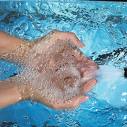 Harriet Austin and James
Jackson found the largest Natural Hygiene institution in the world,
“Our Home on the Hillside”, with 250
beds.
Clara Barton
was one of their
patients.
Harriet Austin and James
Jackson found the largest Natural Hygiene institution in the world,
“Our Home on the Hillside”, with 250
beds.
Clara Barton
was one of their
patients.
 Wooster
Beach
1794 - 1868 blended the native traditions of the American Indians with
the European traditions of physiology and pathology to create Eclectic
Medicine. He built on the Shaker industry of plant medicines which they
had made widely
available,
and by the 1830s, the Shakers
were exporting dried herbs, extracts, oils, ointments and patent
medicines around the World. We can thank Beech and his Eclectic
School
for echinacea and the
Shakers for vanilla
extract.
Wooster
Beach
1794 - 1868 blended the native traditions of the American Indians with
the European traditions of physiology and pathology to create Eclectic
Medicine. He built on the Shaker industry of plant medicines which they
had made widely
available,
and by the 1830s, the Shakers
were exporting dried herbs, extracts, oils, ointments and patent
medicines around the World. We can thank Beech and his Eclectic
School
for echinacea and the
Shakers for vanilla
extract.
In 1827, a medical doctor named Wooster Beach who broke with Samuel Thomson over professionalism and founded the United States Infirmary in New York in 1827 and the Reformed Medical College in 1829, practicing and teaching Eclectic Medicine.
The Eclectic Medical Institute in Worthington, Ohio graduated its first class in 1833, lasting until the last class in 1939 over a century later. A number of other Ohio medical schools had been merged into that institution.
The American School of Medicine (Eclectic) in Cincinnati operated from 1839 to 1857, when it merged with the Eclectic Medical Institute.
Eclectic Medicine expanded during the 1840s as part of an immense populist anti-regular medical movement in North America, which used many principles of Samuel Thomson’s family herbal medication but which chose to train doctors in physiology and more conventional principles along with botanical medicine.
The American School of Medicine (Eclectic) trained physicians in a dozen or so privately funded medical schools, principally located in the mid-western United States. By the 1850s, several “regular” American doctors, especially from the New York Academy of Medicine, had begun using herbal salves and other preparations.
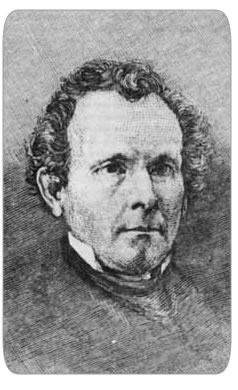 Sylvester
Graham 1794 - 1851
influenced significant numbers of
homeopaths
to turn to natural hygiene, hydrotherapy, vegetarianism, dietary reform
and health reform. His evangelical lectures laid the groundwork for
reform and new ideas. His writings crossed the Atlantic and influenced
European health reform as well.
Sylvester
Graham 1794 - 1851
influenced significant numbers of
homeopaths
to turn to natural hygiene, hydrotherapy, vegetarianism, dietary reform
and health reform. His evangelical lectures laid the groundwork for
reform and new ideas. His writings crossed the Atlantic and influenced
European health reform as well.
The Hygienic movement pushed forward with enthusiasm, because Graham lectured and produced the Graham Journal of Health and Longevity. The Journal influenced the hygienic habits of the people. Everywhere the publication was distributed, decrease in disease was noticed.
Sylvester Graham was born in Suffield, Connecticut, and was ordained in 1826 as a Presbyterian minister. He entered Amherst College in 1823 but did not graduate. He was an early advocate of dietary reform in United States most notable for his emphasis on vegetarianism, and the temperance movement, as well as sexual and dietary habits.
In 1829 he invented Graham bread, and the recipe first appeared in [The New _](http://books.google.com/books?id=klsEAAAAYAAJ&pg=RA2-PR1&dq=The+New+Hydropathic+Cookbook&ei=Jrr7R8WqKIuCyQS0-LG0BQ#PRA1-PA162,M1)_Hydropathic Cookbook (New York, 1855). It showed that Graham bread was made from unsifted flour and free from chemical additives such as alum and chlorine. Graham argued that chemical additives in bread made it unwholesome.
The use of additives by bakeries was a common practice during the Industrial Revolution to make bread whiter in color, and more commercially appealing. Darker wheat bread was considered the fare of country rubes.
Refined bread was a status symbol of the middle class because of its “purity and refinement” in its color and was purchased, rather than home-made.
Graham believed that a firm bread made of coarsely ground whole-wheat flour was more nutritious and healthy.
Graham was also inspired by the temperance movement and preached that a vegetarian diet was a cure for alcoholism, and, more importantly, sexual urges. The main thrust of his teachings was to curb lust. While alcohol had useful medicinal qualities, it should never be abused by social drinking.
For Graham, an unhealthy diet stimulated excessive sexual desire which irritated the body and caused disease. While Graham developed a significant following known as Grahamites, he was also ridiculed by the media and the public for his unwavering zealotry.
According to newspaper records, many women fainted at his lectures when he aired opinions both on sexual relations and the wearing of corsets. Whether their fainting was due to the subject matter or the tight corsets is still debated.
In 1837 he had difficulty finding a place to speak in Boston because of threatened riots by butchers and commercial bakers. In 1850 he helped found the American Vegetarian Society modeled on a similar organization established in Great Britain.
He died the following year, at the age of 58, in Northampton, Massachusetts, where a restaurant, Sylvester’s, now sits on the former location of his house.
Graham influenced notable figures in America, including Horace Greeley and John Harvey Kellogg of Battle Creek Sanitarium fame.
Of his numerous writings, the best known were Lectures on the Science of Human Life (Boston, 1839), of which several editions of the two-volume work were printed in the United States and sales in England were widespread, and Lectures to Young Men on Chastity.
Today, Graham is best known as the father of Graham crackers.
 James Manby
Gully
1808 - 1883 was responsible for promoting the newly fashionable
hydrotherapy in England, and because of his famous clients, for
promoting this therapy in America too. He is one of the many bridges
between our two countries. He was also a homeopath
James Manby
Gully
1808 - 1883 was responsible for promoting the newly fashionable
hydrotherapy in England, and because of his famous clients, for
promoting this therapy in America too. He is one of the many bridges
between our two countries. He was also a homeopath
Gully was a Victorian medical doctor, well known for practicing hydrotherapy, or the “water cure”. Along with his partner James Wilson, he founded a very successful “hydropathy” (as it was then called) clinic in Malvern, Worcestershire, which had many notable Victorians, including such figures as Charles Darwin and Alfred Lord Tennyson, as clients.
He was continually dissatisfied with the medical treatments of the time, and in 1837 met Dr. James Wilson who then spent some time on the continent and returned in 1842 enthused with the idea of hydrotherapy.
The two set up a partnership and opened a “water cure” clinic at Malvern offering a regimen similar to that at Vincent Priessnitz’s Gräfenberg clinic.
In 1846 James Manby Gully published The Water Cure in Chronic Disease, describing the treatments available at the clinic. He became a member of the British Homoeopathic Society in 1848.
The fame of the establishment grew, and James Manby Gully and Wilson became well-known national figures. Two more clinics were opened at Malvern. Famous patients included Charles Darwin, Charles Dickens, Thomas Carlyle, Florence Nightingale, Alfred Lord Tennyson and Samuel Wilberforce.
 Isaac
Jennings 1788-1874 the
Father of Natural
Hygiene
Isaac
Jennings 1788-1874 the
Father of Natural
Hygiene
Jennings received his medical degree from Yale University. After about 15 years of allopathic practice Jennings founded Orthopathy, Greek for truth in disease.
Believing symptoms of illness was nature’s way of purifying the body, he advocated solely hygienic nursing and comfort, rather than the use of drug medication treatments. Jennings was famous for treating his patients with placebo pills made from bread.
He wrote three books, Medical Reform (1847), Philosophy of Human Life (1852) and Tree of Life (1867). He founded and published the Water Cure Journal and Herald of Health.
One of the first doctors in the United States to advocate fasting was Isaac Jennings, M.D. (1788-1874) of Fairfield, Connecticut. Jennings rejected the therapeutic use of drugs to treat specific ailments and instead developed a treatment program that included periodic fasting, a vegetarian diet, pure water, sunshine, clean air, exercise, and rest.
His program, which came to be known as the Natural Hygiene system, is still practiced today, and doctors who follow it usually specialize in overseeing therapeutic fasts.
Simple measures of eating a healthy vegetarian diet, breathing plenty of fresh air, and drinking pure water in combination of sunshine, exercise, and plenty of sleep produced better results for his patients than the modern medical cures.
He achieved great success substituting pills with placebos. Yale University conferred an honorary degree upon him in recognition of his unheard of success.
When Jennings publicly announced years later in 1822 his approach, his medical brethren criticized him and dismissed his methods of health care.
Sylvester Graham, a preacher, recognized the wisdom of Dr. Jennings and brought the information across America through his lectures and writings.
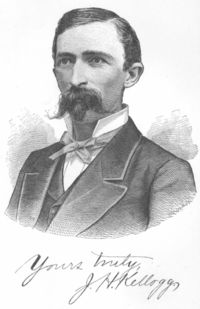 John Harvey
Kellogg
was a homeopath who founded the Battle Creek
Sanitorium which
combined homeopathy,
naturopathy,
hydrotherapy,
phototherapy, diet,
exercise, massage and
electrotherapy. continue
reading:
John Harvey
Kellogg
was a homeopath who founded the Battle Creek
Sanitorium which
combined homeopathy,
naturopathy,
hydrotherapy,
phototherapy, diet,
exercise, massage and
electrotherapy. continue
reading:
 Henry
Lindlahr 1862 - 1924 was the founder of ”Scientific
Naturopathy”
in the United States. He wrote Nature Cure Philosophy & Practice Based
on the Unity of Disease &
Cure_,
_and he recommended
homeopathy
as a natural part of his Nature Cure. His son
Henry
Lindlahr 1862 - 1924 was the founder of ”Scientific
Naturopathy”
in the United States. He wrote Nature Cure Philosophy & Practice Based
on the Unity of Disease &
Cure_,
_and he recommended
homeopathy
as a natural part of his Nature Cure. His son
Victor Lindlahr was the son of Dr Henry Lindlahr, who is considered to be “the founder of American Naturopathy, or perhaps more accurately stated, the bringer of the German Nature Cure to the States”.
Before he became a doctor Henry Lindlahr attended the clinic of Father Sebastian Kneipp (1824-1879) in Bavaria, to attempt to be cured of diabetes using the natural methods that Father Sebastian Kneipp employed, such as a strict fruit and vegetable diet.
He overcame obesity and diabetes naturally under the program of Father Kneipp. Father Kneipp is a nutritionist and famous healer in Eastern Europe, who had a reputation for curing diseases naturally with fruits, vegetables, sunshine and other natural methods - instead of with medications.
In the late 1800’s Henry weighed 250 pounds but was only 5’7” in height. He tried the diets and cures of the time but nothing seemed to help until a friend advised him to see Father Sebastian Kneipp.
Upon following the program that Father Sebastian Kneipp set up for him, Henry Lindlahr cured his diabetes and lost 40 pounds. Following his successes, Henry Lindlahr devoted himself to nutrition and became a doctor in 1904 and founded the successful Lindlahr Sanitarium in the Chicagoland area.
Lindlahr took his training in “Nature Cure” in Europe before opening his practice in an office in Chicago in 1902. Eventually the practice expanded to include an administration building and Lindlahr College in Chicago to train physicians and nurses in his methods of treatment.
Dr. Lindlahr and his staff believed in the Nature Cure which included a vegetarian diet, sunbaths, airbaths, exercise, hydrotherapy, and manipulation. One of the brochures stated: No Surgery, No Drugs, No Serums.
In 1914 Dr. Lindlahr bought 8 acres of the former Lathrop estate in Elmhurst to establish Lindlahr Sanitarium where patients could receive Nature Cure treatments in a country-like atmosphere.
Lindlahr Sanitarium was located on the south side of St. Charles Road between Cottage Hill Ave. and Prospect Ave. The property eventually included an administration building; an annex with bedrooms, baths, parlors, porches, and the main treatment room; bungalows; and a tent city in the summer with screened tents with electric lights.
A brochure for Lindlahr Sanitarium advertises treatment for all illnesses except for those requiring a quarantine, and patients who were “violently insane”.
The large, wooded grounds in Elmhurst provided patients plenty of room for exercise which was an important part of the Nature Cure. Lindlahrs had a sports program that included tennis, basketball, lawn croquet, and volleyball and exercise groups.
Patients from all over the world came for the Nature Cure at Lindlahr Sanitarium. One of the best-known patients was five-time presidential candidate for the Socialist party, Eugene Debs, who died at Lindlahrs. It was estimated that Dr. Henry Lindlahr treated 80,000 patients during his career.
Dr. Henry Lindlahr wrote and lectured extensively about the Nature Cure, which was considered a somewhat unorthodox health program at the time. He authored five volumes on Natural Therapeutics, one of which is Nature Cure (1913) in which he writes about “the philosophy and practice based on the unity of disease and cure.”
Dr. Lindlahr and his wife, Anna, wrote The Nature Cure Cook Book and ABC of Natural Dietetics, which had four printings. Dr. Lindlahr also published Nature Cure Magazine.
 **Benedict
Lust **1872 - 1945 was
born in Germany and cured of
tuberculosis
by Sebastian
Kneipp,
and he them immigrated to America and opened the first school of
Naturopathy in New
York. Lust also popularised the Indian techniques of
Ayurveda and
Yoga and as such he is another
bridge between our two cultures.
**Benedict
Lust **1872 - 1945 was
born in Germany and cured of
tuberculosis
by Sebastian
Kneipp,
and he them immigrated to America and opened the first school of
Naturopathy in New
York. Lust also popularised the Indian techniques of
Ayurveda and
Yoga and as such he is another
bridge between our two cultures.
On Father Kneipp’s advice, he returned to the United States to spread the word. After opening an early health food store, he began publishing several German and English language magazines advocating hydrotherapy and nature cure.
One of his regular customers at the time was Bernarr Macfadden, the flamboyant popularizer of physical fitness and natural medicine.
He married Louise Stroebel Lust, ND on June 11, 1901.
He attended and graduated from the New York Homeopathic Medical College in 1901, where he suffered ridicule for his beliefs in natural medicine. He obtained his osteopathic degree in 1902 from the Universal College of Osteopathy in New York.
Lust purchased all rights to the term naturopathy, which had been coined in 1902 by John Scheel, MD. He soon opened the American School of Naturopathy in New York City, the first naturopathic medical school in the world.
He went on to establish popular and successful health resorts known as Yungborn in Butler, New Jersey and Tangerine, Florida. He also founded the American Naturopathic Association, the first national professional organization of naturopathic physicians.
In 1918 he published the Universal Naturopathic Encyclopedia for drugless therapy, and also published Nature’s Path magazine.
He became known as the “Father of Naturopathy” in America, and his writings and magazines introduced the country not only to German methods, but also Indian concepts of Ayurveda and Yoga. Paramahansa Yogananda was one of several Indians who wrote articles for Nature’s Path in the 1920’s, gaining wide exposure to a large American audience.
Lust was harassed by authorities and medical associations for promoting his approach towards healing, involving massage and nude sun bathing, at his health resorts, and was arrested at least 19 times by New York and Federal authorities.
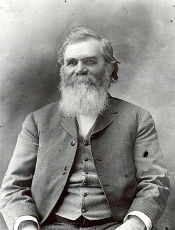 Daniel
David Palmer 1845 -
1913 founded chiropractic.
Daniel
David Palmer 1845 -
1913 founded chiropractic.
While working as a magnetic healer in Davenport, IA, he encountered a deaf janitor who he discovered had a palpable lump in his back. He theorized that the lump and his deafness were related. After a reported successful restoration of the man’s hearing, it led to the beginning of Chiropractic history.
His theories revolved around the concept that altered nerve flow was the cause of all disease, and that misaligned spinal vertebrae had an effect on the nerve flow. He postulated that restoring these vertebra to their proper alignment would restore health.
Palmer founded a school based on his work that would become the Palmer School of Chiropractic in 1897. By 1902 the school had graduated 15 chiropractors. In 1906, Palmer was prosecuted under the new medical arts law in Iowa for practicing medicine without a license, and chose to go to jail instead of paying the fine. As a result, he spent 17 days in jail, but then elected to pay the fine. Shortly thereafter, he sold the school of chiropractic to his son, B. J. Palmer.
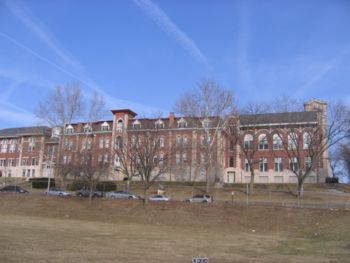 Bartlett
Joshua (B.J.) Palmer 1881
Bartlett
Joshua (B.J.) Palmer 1881
- 1961 was a pioneer of Chiropractic.
On May 30, 1904, Palmer married Mabel Heath, and they both worked as chiropractors and professors at Palmer College of Chiropractic.
B.J. Palmer ran his research clinics in Davenport, IA. for 16 years having great success developing his “Upper Cervical” Adjusting Technique. This technique was done with the patient in a knee-chest position. This is the original Upper Cervical Technique and not the Drop Headpiece and side posture position that Chiropractors are taught today.
He was able to prove the Subluxation Complex of C1 and C2 via the “Pattern Analysis”. This would allow the Doctor of Chiropractic to know the correct time to adjust a patient. With X-ray interpation, the Chiropractor now knows the correct time and the correct place to ajdust a subluxated patient.
Palmer was on the cutting edge of x-ray development with, at the time, some of the best x-ray equipment being developed at the Palmer School in Davenport, Iowa.
On December 12, 1906 David Daniel Palmer was born, and would be the couple’s only child. In keeping with his educational efforts for the profession, he became known as “The Educator.”
Palmer also became involved in a number of technological advances in his region of Iowa. He owned the first automobile in the area, and he would use it when he made house calls.
In 1922, Palmer purchased a local radio station, WOC (whose call letters stood for “Wonders Of Chiropractic”), and began using it to market chiropractic, as well as to broadcast farm, sports and weather reports.
Ronald Regan, former President of the United States and Actor, was given his first broadcast job by Dr. Palmer to broadcast sports for WOC.
A second station in Des Moines, WHO, (“With Hands Only”) was purchased in 1930. Television stations were later added under the same call letters.
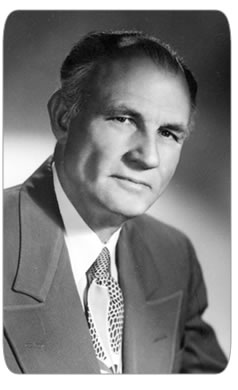 Herbert
Shelton **1895 - 1985
**
Herbert
Shelton **1895 - 1985
**
In the early 1900s, Dr. Herbert Shelton rediscovered hygiene. He worked tirelessly to distinguish “natural hygiene” accurately. Dr. Shelton brought natural hygiene to its peak. He wrote over 50 books on natural hygiene. He helped thousands of people recover their health. Because of his efforts, natural hygiene continues today.
In 1911 Herbert Shelton read Sylvester Graham and began his health career. He read Bernarr McFadden’s Physical Culture magazine’s many articles on fasting, weight training, and raw food. Herbert sought Trall’s work in which he clearly outlines the stance of the 19th Century Hygienists. In 1919 Herbert attended McFadden’s College of Physcultopathy and interned at a Sanitarium where he received clinical experience in fasting.
Dr. Shelton believed the simple truths taught by natural hygienists. He desired to inform the world of the simplicity of health through natural hygiene. He wanted people to be free of the inflictions of the medical industry and their drugs.
Eventually, Dr. Shelton went to the American College of Chiropractic and Naturopathy. After his education he took on various doctoring positions. In 1927 Dr. Shelton opened his own hygienic practice. He was harassed by the Medical Men. He was the first to be jailed for practicing medicine without a license. Dr. Shelton opened seven health schools and each was shut down by the American Medical Association.
Throughout his career, Dr. Shelton supervised over 40,000 fasts that his patients undertook while under his care. Fasting was advocated by the natural hygienists in cases of acute and chronic illnesses as the quickest means of restoring one to a state of health by removing the toxic accumulations within the body. Despite his repeated jailings his hygienic practice continued to grow and he was respected and admired for his efforts.
By 1932, Dr. Shelton lectured internationally with hundreds of people attending his events. Over the course of the next 40 years, Dr. Shelton continued to publish many books and run his health schools. He united the hygienists of the day by organizing the American Natural Hygiene Society.
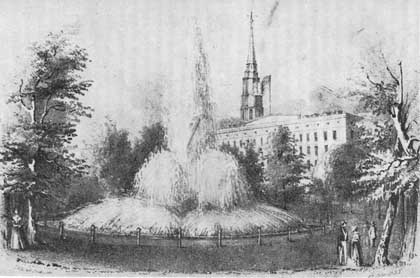 Joel Shew 1816-1855
introduced the water-cure into America in 1844 after he had gone to
Austria to study the
water-cure
under Vincent
Priessnitz at the
Gräfenberg
clinic. Shew later on enhanced hydrotherapy by focusing on its other
aspects like fresh air, lots of sunshine, a good diet plan, and an
exercise
routine.
Joel Shew 1816-1855
introduced the water-cure into America in 1844 after he had gone to
Austria to study the
water-cure
under Vincent
Priessnitz at the
Gräfenberg
clinic. Shew later on enhanced hydrotherapy by focusing on its other
aspects like fresh air, lots of sunshine, a good diet plan, and an
exercise
routine.
Shew was a neighbour of Edgar Allan Poe, and Mary Gove Nichols worked as resident homeopathic physician at Shew’s water cure establishment. Many of the Boston intelligentsia visited Shew’s water cure establishments and attended his Hygeio-Therapeutic College in New York City
Shew also founded professional journals.
Shew wrote The Water-cure Manual: A Popular Work, Embracing Descriptions of the… and Tobacco: Its History, Nature, and Effects on the Body and Mind and many more.
At the first session of the American Vegetarian Convention in 1850:
Agreeably to public notice, a Convention of Vegetarians and others friendly to the cause of Dietetic Reform, was held at Clinton Hall, New York, May 15th, 1850. Notwithstanding the inclemency of the weather, there was a fair concourse assembled on the occasion. Soon after 10 o’clock, a.m. Dr. William A. Alcott, of West Newton, Massachussets, called the meeting to order, by nominating Dr. Joel Shew, of New York as President pro tem., and Mr. Joseph Wright, A.M., of Camden, New Jersey, as Secretary.
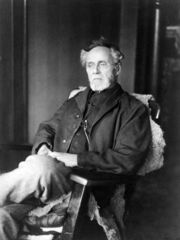 Andrew Taylor
Still 1828 -1917 is
considered the father of osteopathic
medicine
and osteopathy.
Andrew Taylor
Still 1828 -1917 is
considered the father of osteopathic
medicine
and osteopathy.
After studying medicine and serving an apprenticeship under his father, Still became a licensed M.D. in the state of Missouri. Later, in the early 1860’s, he completed additional coursework at the College of Physicians and Surgeons in Kansas City, Missouri.
He went on to serve as a surgeon in the Union Army during the American Civil War. After the Civil War and following the death of three of his children from spinal meningitis in 1864, Still concluded that the orthodox medical practices of his day were frequently ineffective and sometimes harmful.
He devoted the next ten years of his life to studying the human body and finding better ways to treat disease.
His research and clinical observations led him to believe that the musculoskeletal system played a vital role in health and disease and that the body contained all of the elements needed to maintain health if properly stimulated.
Still believed that by correcting problems in the body’s structure, through the use of manual techniques now known as osteopathic manipulative medicine (OMM), the body’s ability to function and to heal itself could be greatly improved.
He also promoted the idea of preventive medicine and endorsed the philosophy that physicians should focus on treating the whole patient, rather than just the disease. He became so skilled at reducing fractures, he became known as the “lightening bone setter”.
At the time, these beliefs formed the basis of a new medical approach, osteopathic medicine. Based on this philosophy, Still founded the first school of osteopathy
- the American School of Osteopathy (now Kirksville College of Osteopathic Medicine, part of A.T. Still University) in Kirksville, Missouri in
- 1892.
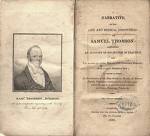 Samuel Thompson 1769 -
1843 urged ’every man his own
physician’
Samuel Thompson 1769 -
1843 urged ’every man his own
physician’
Thompson saved her using herbal medical techniques. From this experience he brought together the Native American and European philosophies and herbs to form Thompsonian Herbalism.
Thompson became a very popular herbalist in the 1840’s and it is estimated that a full one fifth of the population of America used Thompsonian Herbalism to treat their diseases. His success was so great that many doctors and herbalists began calling themselves Thompsonians.
These Thompsonian herbalists did not want to associate themselves with the “regular” physicians of their time who used drastic, toxic, and sometimes deadly techniques, much like today’s medical disaster.
Thompson believed what the father of medicine believed, that disease was really simple and theories made a needless mystery of medicine. He further believed that the mystery of medicine prevented ordinary people from taking responsibility for their own health…
In 1822, ten years into his successful practice Thompson wrote a book titled “New Guide to Health; or Botanic Family Physician.” Then Thompson began selling patents from his system of healing so that any American family could, for $20, solve their own disease problems. These patent holders were able to turn to Thompson’s herbal warehouse to purchase the formulas and, with a copy of his book, apply the successful herbal techniques. It was not long before this system began to be picked up in Europe where some of it’s original roots were located.
Physiomedicalism originated from the teachings of Samuel Thompson (1769-1843) and who himself was strongly influenced by Native American healing practices, the use of their herbs but more important the use of the vapor bath which was derived from the physio-spiritual teachings of the Native American ’sweat Lodge’, that combined the psycho-active principle of prayer with physical therapies.
Samuel Thompson’s system, at one time in 19th century North America claimed up to three million adherents, later matured in the work of Wooster Beach (the founder of Eclectic Medicine), W.H. Cook, T.J. Lyle and J.M. Thurston.
The essential emphasis of Thompson’s system was based on the essential vitality of the organism and its ability to eliminate toxic waste from the organs and tissues or the body.
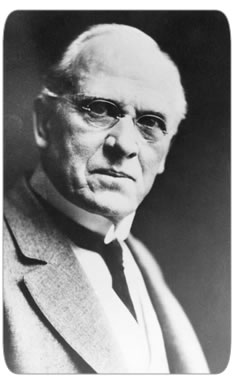 **John H
Tilden **1851
**John H
Tilden **1851
- 1940
John H. Tilden, the son of a physician, was born in Van Burenburg, Illinois, on January 21, 1851. He received his medical education at the Eclectic Medical Institute, Cincinnati, Ohio, a medical school founded in 1830 as a protest against the allopathic… schools of medicine of that time.
He was graduated in 1872, with the degree of doctor of medicine. From the best information we can obtain, his father was a Dr. Joseph G. Tilden, who came from Vermont in 1837 to Kentucky, in which State he married.
Dr. John H. Tilden started the practice of medicine at Nokomis, Illinois, then for a year at St. Louis, Missouri, and then at Litchfield, Illinois, until 1890, when he moved to Denver, Colorado.
In Denver he located in the downtown business section, in an office with other doctors. Later he established a sanitarium in an outer section of the city. This sanitarium and school he conducted until 1924, when he sold the Institution, for about half of what he had plowed back into its development, to a Dr. Arthur Voss of Cincinnati, Ohio, intending to devote himself to writing and lecturing.
However, he soon became discontented without his school and after a period he bought two residences on Pennsylvania Avenue, in Denver, united them into one and opened a new sanitarium and school, having to borrow from a friend a part of the money with which to make the purchases.
This probably was in 1926. This school continued until the Doctor’s death, on September 1, 1940.
It was during the early years of his practice in Illinois, that Dr. Tilden began to question the use of medicine to cure illness. His extensive reading, especially of medical studies from European medical schools, and his own thinking, led him to the conclusion that there should be some way to live so as not to build disease, and in this period his thoughts on toxemia began to formulate and materially develop.
From the beginning of his practice in Denver, the Doctor used no medicine but practiced his theory of clearing the body of toxic poison and then allowing nature to make the cure, teaching his patients how to live so as not to create a toxic condition and to retain a healthy body free of disease.
An uncompromising realist and a strict disciplinarian, the Doctor wasted no time on those who would not relinquish degenerating habits, but to his patients and disciples he was both friend and mentor.
In 1900 he began the publication of a monthly magazine called ”The Stuffed Club,” which continued until 1915, when he changed the name to ”The Philosophy of Health,” and in 1926 the name was changed to ”Health Review and Critique.”
His writing for his publication was almost entirely done in the early morning hours, from three until seven. The purpose of the publication was not to make money but to spread knowledge of the Doctor’s teachings. In time it attained a wide circulation, not only in this country but also abroad, even in Australia, but it never produced revenue, for the Doctor refused to make it an advertising medium, as often urged to do by advertising firms.
As his death revealed, after sixty-eight years of practice, the Doctor had accumulated only an exceedingly modest estate. His life was pre-eminently one of self-sacrifice and of devotion to service, searching after truth, with an indomitable will and with an intense fortitude to adhere to the truth when discovered.
In his day the Doctor’s thoughts received no support from the established medical profession but brought the strongest of opposition and condemnation.
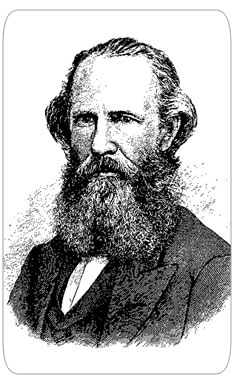 Russell Thacker
Trall1812 - 1877**
**
Russell Thacker
Trall1812 - 1877**
**
He advocated exercise, hygienic cooking with a proper diet, and the natural treatment of alleged disease. He defended the scientific basis of vegetarianism.
He pointed out the true action of drugs and stimulants, revealed the true nature of disease, and argued that there was no such thing as a “cure”, but rather a proper way of living.
Enthusiasm in the movement grew. In 1852 it is estimated that the two schools that taught hydropathy and hygeiotherapy outnumbered the practitioners of any of the medical schools - allopathic, homeopathic, etc. - in this country.
Vigorous drives against the medical system lead to states repealing a number of laws.
In reaction, judgment medical societies were formed. In 1909 the Flexnor Report closed down many of the institutes that taught hygienic practices.
Medical schools conferred the title Doctor of Medicine as a part of the move to create a monopoly over health care.
 Frances
Wright 1795 – 1852 also
widely known as Fanny Wright,
Frances
Wright 1795 – 1852 also
widely known as Fanny Wright,
was a Scottish lecturer, writer, freethinker, feminist, abolitionist, and social reformer, who became a U. S. citizen in 1825.
Wright was born to a wealthy family in Dundee, Scotland, the daughter of James Wright, designer of Dundee trade tokens. When she was orphaned at the age of three, she was left with a substantial inheritance. By the age of 18, she had written her first book.
She emigrated to United States in 1818, and with her sister toured from 1818 to 1820. She became enamored with the young nation and became a naturalized citizen in 1825.
Wright advocated abolition, universal equality in education, and feminism. She also attacked organized religion, greed, and capitalism. Along with Robert Owen, Wright demanded that the government offer free boarding schools.
Wright was the co-founder of Free Inquirer newspaper and authored Views of Society and Manners in America (1821), A Few Days in Athens (1822), and Course of Popular Lectures (1836).
Wright became the first woman to lecture publicly before a mixed audience when she delivered an Independence Day speech at New Harmony in 1828.
In 1825, Wright founded the Nashoba Commune intending to educate slaves to prepare them for freedom. Wright hoped to build a self sustaining multi racial community comprised of slaves, free blacks, and whites. Nashoba was partially based on Robert Owen’s New Harmony settlement, where Wright spent a significant amount of time. Nashoba lasted until Wright became ill with malaria and moved back to Europe to recover.
The interim management of Nashoba was appalled by Wright’s benevolent approach to the slaves living in Nashoba; rumors spread of inter-racial marriage and the Commune fell into financial difficulty, which eventually led to its demise.
In 1830, Wright freed the Commune’s 30 slaves and accompanied them to the newly-liberated nation of Haiti, where they could live their lives as free men and women.
The modern-day city of Germantown, Tennessee, a suburb of Memphis, is located on the land on which Wright situated her community.
Wright’s opposition to slavery contrasted to most other Democrats of the era, and her activism for workingmen distanced her from the leading abolitionists of the time. (Lott, 129)
Wright married a French physician, Guillayme D’Arusmont, with whom she had one child. They later divorced.
As an activist in the American Popular Health Movement between 1830 and 1840, Wright advocated women being involved in health and medicine. After the midterm political campaign of 1838, Wright suffered from a variety of health problems. She died in 1852 in Cincinnati, Ohio, from complications resulting from a fall on an icy staircase.